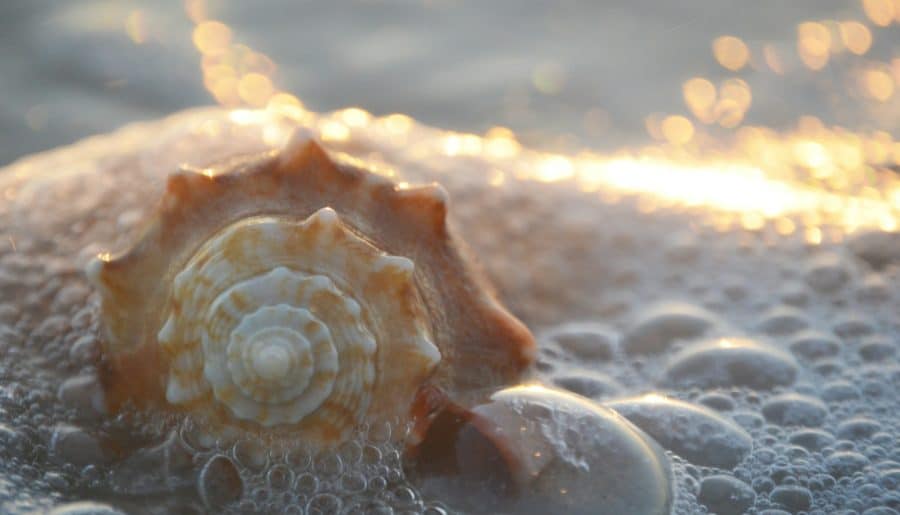It’s always exciting to find shells on the beach during the summer, especially with family or friends. I’m sure you’ve done this at one point in your life.
You may even have picked up a seashell and held it to your ear to hear the sound of the ocean or admired the intricate designs of the shells you’ve gathered.
But have you ever wondered how shells get their shapes? It’s as if the twists and coils of shells hide a story told by nature’s forces.
So, how do shells form?

When mollusks make their shells, a part of their body called the mantle produces the shell by adding layers of calcium carbonate mixed with protein. The mantle has special cells that use these materials to build the shell layer by layer, creating a strong structure.
The main mineral in shells is calcium carbonate combined with protein. Think of it as this: The protein is similar to the steel bars providing shape and support, while calcium carbonate is like the cement filling all the empty spaces.
Shells have three layers made of similar materials but arranged differently. The outer layer is rough and made of proteins, the middle layer is made of crystals from calcium carbonate, and the inner layer is smooth and iridescent, known as nacre or mother-of-pearl.
As mollusks grow, they add a new layer to the shell’s opening, making it larger and forming growth rings that indicate their age.
Now you might wonder, how do shells have different designs?
Various deposits and arrangements create different shell shapes, such as cylinders, cones, or spiraling tubes. Shells have complicated shapes because mollusks follow simple rules when making their homes, and how the shell grows also contributes to its different patterns.
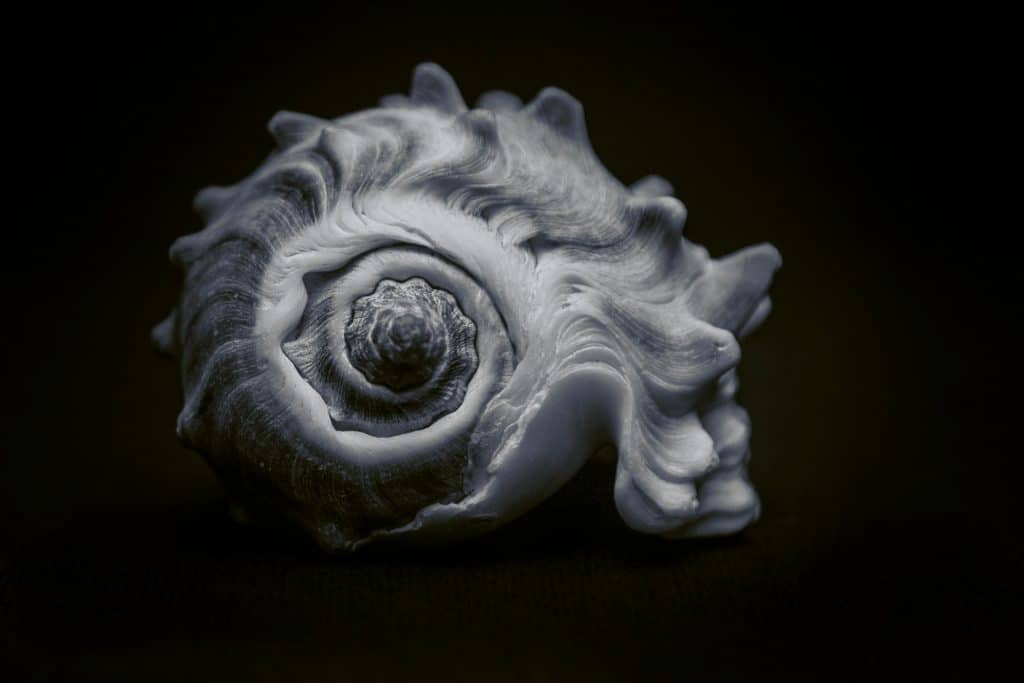
The first rule is to add more material each time, gradually increase the opening size, and form a cone from a circle.
The second rule is to add more stuff to just one side of the opening to make a complete circle, which gives you a doughnut shape.
The third rule is to twist the points where the mollusk adds the stuff.
Following the first two rules creates a flat spiral shell while adding the twist creates a non-flat, twisted spiral shell.
But what about the shells with more intricate designs?
To understand how decorations are made, we must examine the forces that occur while the shell grows.
When a shell grows, the part that connects to it, called the mantle, plays a big role. If the mantle doesn’t fit well with the shell, it causes stress to the mantle. If the mantle is too small for the opening, it has to stretch. If it’s too big, it has to squeeze.
This stress can change the shape of the new material the mantle makes, which will become a part of the shell, making it look different. So, if the shell doesn’t grow at the same speed as the animal inside, it will look different and have cool patterns.
For instance, the beginning of a shell, known as the aperture, typically starts out small. Many shells have a round opening, while others are more oval-shaped. If a shell grows steadily, it will form a more even tube, but rapid growth will result in a more distinct cone shape.
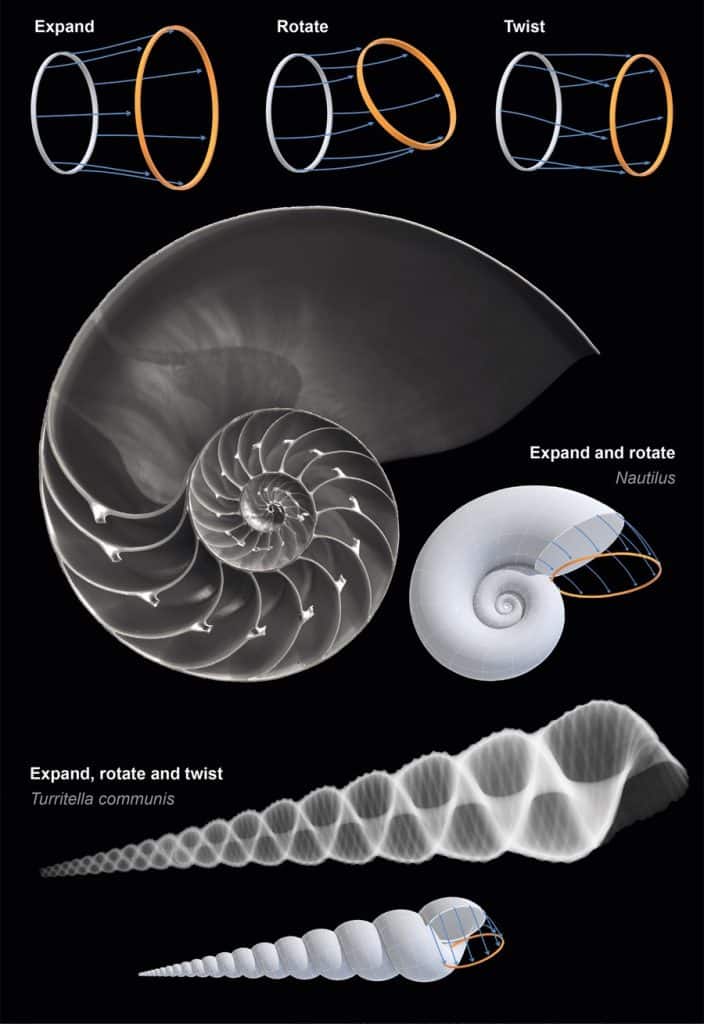
The coiling of shells depends on how substances are spread around the opening. A looser coil will create a shape that doesn’t curl back on itself, while a faster coil can lead to an overlap with previous spirals.
Along with coiling and dilating, many shells rotate their axis, adding to their diverse forms.
When the substance runs into the hardened shell too quickly or unevenly, it creates interesting ridges and sharp points.
If the part that makes the shell and the newly hardened shell don’t match, it can create lines. Those mismatches and variations in the shell opening result in distinctive and beautiful patterns.
The resulting force can also create ridges if the secreting mantle and the newly hardened shell mismatch.
The mismatch can also cause ribs, a variation in the shell opening.
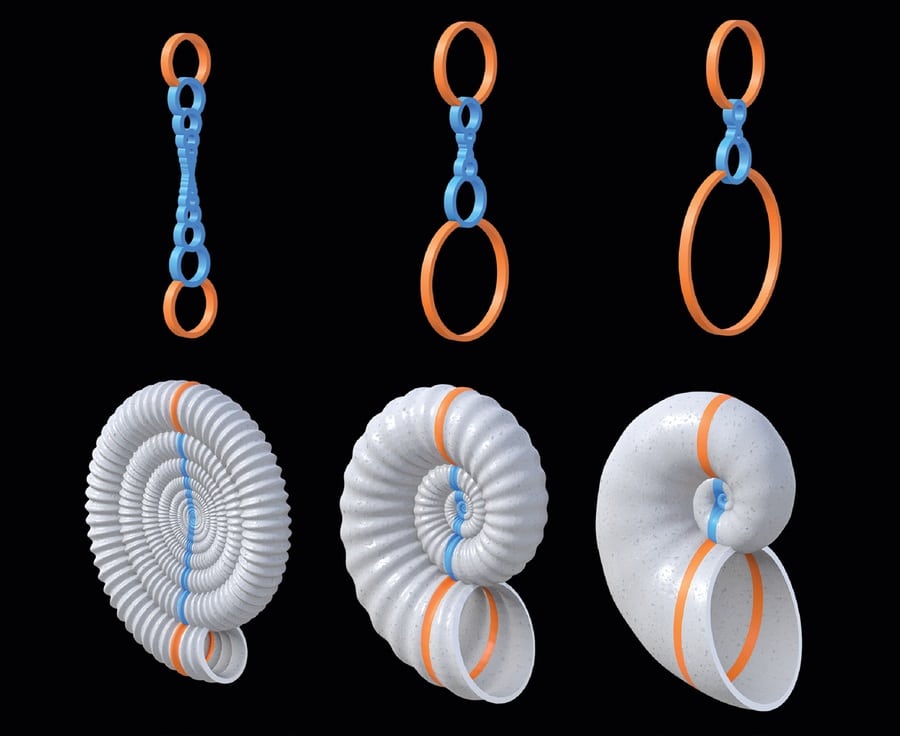
A sudden release of substance can also enhance a pattern of lines, forming sharp points, and the faster the growth spurt, the taller the points become.
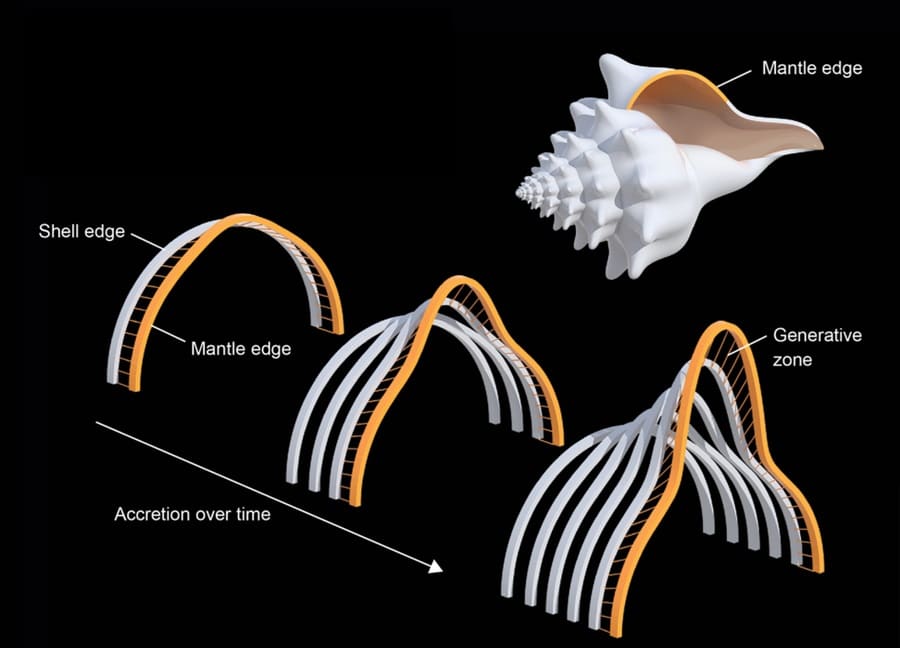
Image Credit: Bryan Christie Design (illustrations)

Image Credit: Bryan Christie Design (illustrations)
Seashells can also have different colors. The way the shell forms can help explain where the color comes from.
The color in the shell comes from where the mollusks live or what they eat. Shells from warm waters are often brighter than those from cold waters, maybe because of their food.
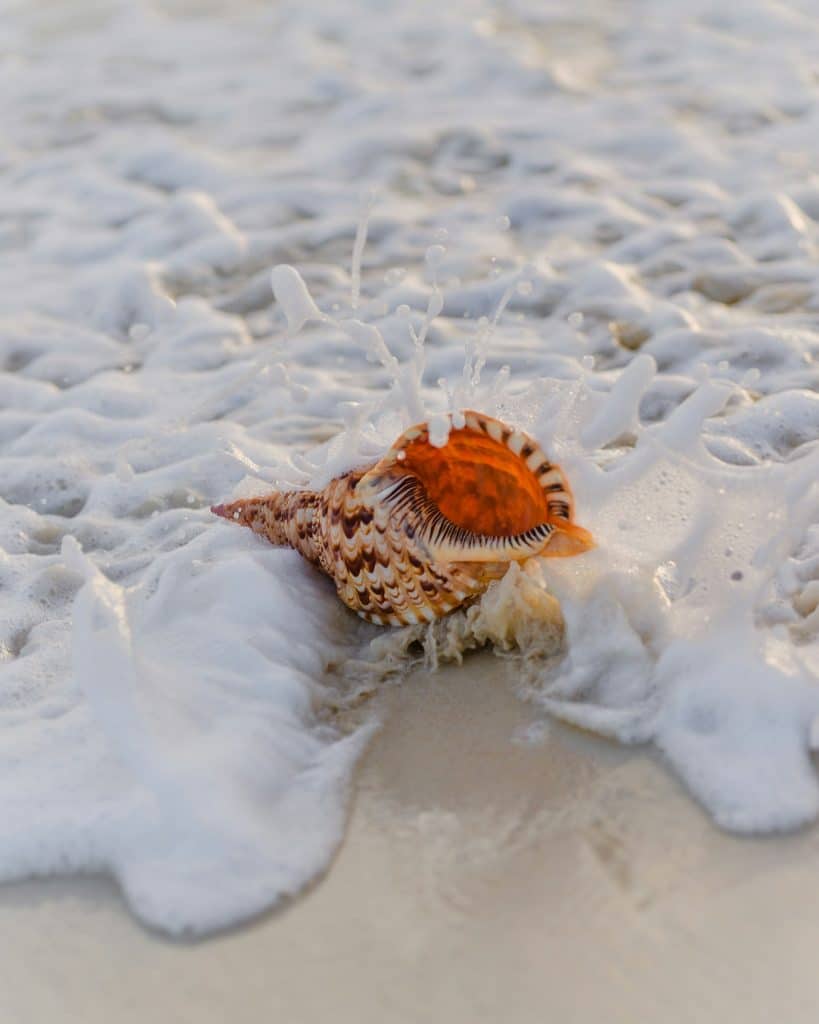
For example, warmer Caribbean waters have more colorful food than the cold ocean near Maine.
However, scientists are still trying to understand how the colors spread and make pretty patterns on seashells.
